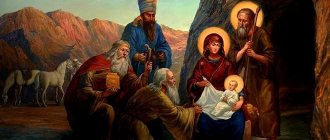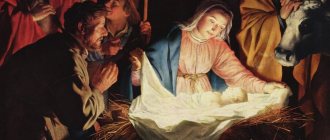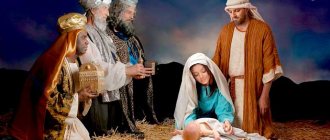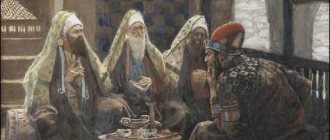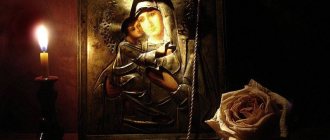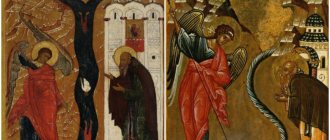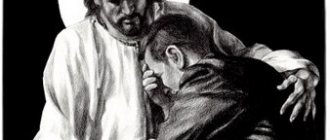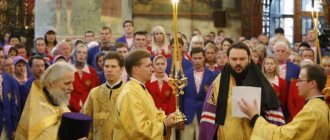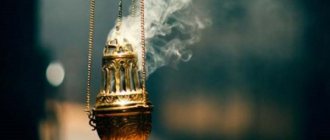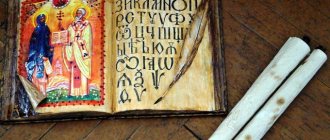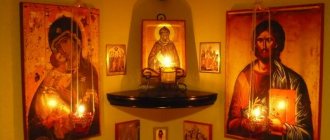The Synodal translation of Scripture, in particular the New Testament, introduces some confusion regarding the term “magician”. On the one hand, we are talking about people who came to worship the newborn Jesus Christ. They are mentioned in the Gospel of Matthew (chapter two), and they are certainly positive characters. On the other hand, in “Acts”, in the eighth chapter, it is told about a certain Simon who practiced sorcery. Seeing that the condescension of the Holy Spirit on a person allowed him to perform great miracles, he brought money to the apostles, asking them to sell this gift. Since then, trading in church positions has been called simony. Thus, the magician mentioned in Acts is a warlock trying to impersonate someone great. In a word, a charlatan. So what does “magi” mean, what is the etymology of this word?
Gifts of the Magi
In the section “The Essence of Things,” “Thomas” briefly talks about Christian symbolism using examples of specific artifacts and shrines.
The gifts of the Magi are gold, frankincense and myrrh, which the Magi brought as a gift to the newborn Christ Child.
At Christmas it is customary to give each other gifts. This tradition goes back not only to the image of St. Nicholas, who became the prototype of Santa Claus. It also has evangelical roots - the story of the Magi and their gifts.
Symbolism:
The gifts of the Magi have symbolic and prophetic meaning:
- Gold is like a gift to the King,
- Incense - as a gift to the High Priest and God,
- Smyrna - as a gift to mortal Man.
Gold is a royal gift in the form of tribute or tax. In ancient times, gold was considered the most valuable metal, from which various jewelry and household items were made for kings and influential people.
Incense is an aromatic tree resin and incense. As now, in Old Testament times it was used for worship. Burning incense symbolically expresses a person's reverence for God.
Smyrna is a resin obtained from African and Indian trees of the Burzer family; has a pleasant smell. In Jewish tradition it was used to anoint the dead.
Story:
The Evangelist Matthew writes about the Magi:
When Jesus was born in Bethlehem of Judea in the days of King Herod, wise men from the east came to Jerusalem and said, “Where is he who has been born King of the Jews?” for we saw His star in the east and came to worship Him (Matthew 2:1-2).
Having learned nothing from Herod, the wise men went further after the star, which led them to Bethlehem: And behold, a star... came and stood over the place where the Child was... and entering the house, they saw the Child with Mary His Mother, and, falling, worshiped Him; and having opened their treasures, they brought Him gifts: gold, frankincense and myrrh (Matthew 2:11).
Adoration of the Magi. Giotto di Bondone. Between 1305 and 1313
Matthew's story
The evangelist is quite stingy with information. “Wise men from the East” came to Herod and asked: “Where is the king of the Jews, since we saw His star?” Hearing about a possible competitor, Herod became excited. He gathered a council of scribes and folk sages who knew the Torah so that they could point him to the exact place of birth of the Child. They, having studied the books and prophets, pointed to Bethlehem. The Magi went there. They followed the star and found the Baby in the manger and his Mother. They bowed to them and brought frankincense, gold and myrrh to Jesus Christ, the Son of God, who came into this world. Having been admonished by an angel in a dream, they did not return to Herod, but went to their lands by another route. That's it, end of story. Why are these characters mentioned only in Matthew, and nowhere else? Biblical scholars claim that the message of this Gospel is directed to the Jewish population of the Roman Empire. It most often mentions the Prophets, and the entire first chapter is devoted to the genealogy of Jesus, although all Christians know that He is the son of the living God, and has nothing to do with Joseph from the line of David. In Matthew, the “eastern wise men” are experts in the Jewish Scriptures who calculated by the movement of the stars when the Messiah would come to earth.
Who are the Magi:
In the original New Testament, the Magi are called μάγοι, that is, magicians. In ancient Greek, this word refers to Persian (Iranian) priests, astrologers and astronomers who had special knowledge.
The Russian word “magician” is derived from the word “magician”.
The Gospel does not specify the number of Magi and their names, but church tradition names three: Caspar, Balthasar and Melchior.
According to the same legend, they all subsequently became Christians and were baptized by the Apostle Thomas. Western tradition says that the apostle ordained the Magi as bishops. Their relics were found by the holy Queen Helena and today are in the Cologne Cathedral (Germany).
Photo by BDKJ DV Hildesheim /Flickr/ CC BY-NC 2.0
What happened to the relics later?
Despite the fact that neither Matthew nor any other evangelist mentions what happened to the Magi after they returned to their land (Mesopotamia), church tradition did not think of forgetting them. The cult of veneration of the remains of saints, martyrs and saints appeared in the fourth century and developed extremely in the Middle Ages. The more relics, the larger the flow of pilgrims, and therefore the greater the amount of donations. Guided by this simple logic, the Church began to develop the cult of the Magi and everything connected with them. It was proclaimed that the wise men from the East received baptism from the Apostle Thomas and later suffered martyrdom in their own countries. It is not surprising that the relics of the Magi were soon discovered. They were found by the Empress of Byzantium Helen of Constantinople, as usually happened to her, in a dream.
How did it happen that the remains of people who left Bethlehem for the East are suddenly discovered in the Byzantine (now Turkish) city of Sheva? Matthew does not mention where exactly the native lands of the three magicians were located, but an indication of this is contained in the Old Testament. The prophecy of Isaiah (60:6) says: “They will all come from Sheba and proclaim the glory of the Messiah, bringing gifts of incense and gold.” But in the Psalter (71:10) something else is written: “The kings of the islands and Tharsia, Sheba and Arabia will bring Him tribute; and all nations will worship Him.” As we see, the native lands of the sages (or the kingdoms of the three kings) lie far from Sheva. But sacred tradition found a way out. A legend arose that at the age of one hundred and fifty years each, all three wise men met in Sheva to honor the memory of Our Lord. There they rested in peace. And the bones of the Magi were preserved by the Christian community and transferred to Constantinople.
Veneration of the Magi in the Western tradition or “three kings”
In some European countries, Saints Caspar, Balthasar and Melchior are especially revered and called the “three kings”. On January 6, children wearing crowns and carrying staves walk through the streets of Cologne and other German cities, symbolizing the Magi. They knock on houses, congratulate residents and receive sweets or small money in return. On the doors of such hospitable hosts the inscription “B+S+M” appears - the initial letters of the names of the Magi in the Latin alphabet. This is done as a sign that the “three kings” themselves visited the home and blessed it.
Monastery of St. Paul on Athos. Photo from afonua.com
Rituals of veneration
The celebration of Christmas in Western Europe and among us, the Eastern Slavs, differs not only in time (December twenty-fifth and January seventh), but also in ritual. The tradition of the Roman Catholic Church does not forget the adoration of the magicians, whom it renamed “kings”. Thus, three ordinary people began to symbolize the peoples of different continents who adopted Christianity. The Church also came up with the names of the wise men who came to Jesus. These are Balthazar (an African youth), Melchior (a European in the prime of life) and Caspar, or Gaspar (an elderly Asian). In the first days of the year in different European countries, people remember these three characters and try to recreate the Gospel story about the coming of the Magi.
Particular mention should be made of how Three Kings Day is celebrated in Spain. Large or small street costume processions take place in all cities and villages of the country. Melchior, Caspar and Balthazar, surrounded by a large retinue, on horseback, greet the crowd and shower it with candy. On this day it is customary to give gifts to all children, especially the youngest. Christmas wise men are revered on a special scale in Germany. And this is not surprising - after all, the relics of these three sages, as the Church assures, rest in crayfish in the Cologne Cathedral. But these processions consist of only children. They go from house to house, and everywhere they are generously presented with sweets. And in gratitude, the little petitioners draw the mysterious letters “B+C+M” in chalk above the door frame, supplementing this inscription with an indication of the year. The owners do not wash it for many years, until there is no room left above the hospitable threshold. After all, the inscriptions mean that Balthazar, Caspar and Melchior visited under the roof of this house and met here with the warmest welcome. Why did this dwelling receive the blessing of the saints?
History of gifts after the Dormition of the Virgin Mary
The Mother of God carefully preserved the gifts and before her Assumption she handed them over to the Jerusalem Church, where they remained until the year 400. Later, the Byzantine Emperor Arcadius transferred the gifts to the Church of Hagia Sophia in Constantinople. After the capture of Constantinople by the Ottoman Turks, in 1470, the gifts of the Magi were given to the Serbian monastery of St. Paul on Mount Athos by the widow of the Turkish Sultan Murat II Maria, the daughter of the ruler of Serbia (she did not convert to Islam and remained a Christian until the end of her life).
According to legend, Mary personally wanted to bring the gifts of the Magi to the monastery, but a heavenly voice stopped her in front of the walls and reminded her of the ban on women being on the Holy Mountain. In memory of this, the monks erected a cross, which is called Tsaritsyn, and in the nearby chapel they depicted the meeting of the great shrines by the inhabitants of the monastery.
The gifts of the Magi are kept to this day in 10 special arks on Holy Mount Athos (Greece) in the monastery of St. Paul.
Modern Neopagans
At the turn of the 20th-21st centuries, after the discredit of the Orthodox Church, many people appeared in our country who considered themselves neo-pagans. These magicians of Russia are actively engaged in preaching and publishing activities. They are the religious authorities and priests of their communities of believers. At the same time, on the pages of magazines and newspapers you can read many advertisements about healers and magicians who drain wax, remove the crown of celibacy, and the like. The Russian Orthodox Church considers the activities of both to be displeasing to God, since all divination and magic are warlocks. But let's be lenient. If we analyze historical sources, and also take into account the opinion of art historians, then the holy gifts of the ancient Magi, carefully preserved by the monks on Mount Athos, are nothing more than fiction. Why?
Written evidence does not mention the gifts of the Magi as relics until the eleventh century. Around 1200, Archbishop Anthony of Novgorod visits Constantinople and writes that Hagia Sophia contains golden vessels, which “the sorcerers brought to the Lord with gifts.” The first mention of the current form of gold - as we remember, gold plates - dates back only to the fifteenth century. Having studied the ornament and filigree technique on them, art historians came to the conclusion that they once formed one piece of jewelry - a belt decorated with post-Byzantine filigree. The jewelry was made in the 15th century.
Smyrna - from biblical times to the present day
A person perceives involvement in the Lord with all his senses. And this is not only the sight of holy images and the altar, the prayer of the priest and the singing of the church choir, but also the fragrance of incense, the aromas of candles and oil. These unearthly smells remind us of a lost paradise and evoke thoughts of the eternal. They symbolize the various gifts of the Holy Spirit. Aromas accompanied the Savior from birth to death: The Magi brought precious incense to the newborn Jesus - incense and myrrh. The Savior, taken down from the cross, was anointed with myrrh and aloes. Incense is a gift from God and the quintessence of nature. To prepare one gram of rose oil, five kilograms of rose petals are required. Incense has always been worth its weight in gold and was part of worship. The perception of smell through inhalation of air filled with incense accompanying the service is the most direct physical contact of a person with the service. One of the main signs of a person’s holiness before the Lord is the fragrance of holy relics. Miracle-working and myrrh-streaming icons exude a heavenly aroma. The word “myrrh” (myrrh, myrrh) is repeatedly mentioned in the Bible and has different meanings. One should distinguish holy ointment from aromatic oils, myrrh and myrrh. The word Myrrh (from the ancient Greek μυρον - “fragrant oil”) in Christianity means a specially prepared and consecrated aromatic oil used in the Sacrament of Confirmation. It is also necessary during the consecration of a newly built temple, for anointing the antimension, altar and walls. Previously, in the Orthodox tradition, it was also used for anointing for the kingdom.
The first recipe for making myrrh is given in the Bible: “And the Lord said to Moses: Take for yourself the best fragrant substances: pure myrrh five hundred shekels, fragrant cinnamon half as much as two hundred and fifty, fragrant cane two hundred and fifty, cassia five hundred shekels, according to the shekel of the sanctuary, and oil olive gin; and make of it an ointment for holy anointing, a compound ointment, by the art of making the ointment: it will be an ointment for holy anointing” (Ex. 30:22-25) Since ancient times, the best aromatic substances have been used to make ointment. Nowadays, myrrh is prepared from the highest quality olive oil with the addition of white grape wine and about 40 aromatic substances, incl. resins of boswellia, myrrh, stacti, orris and galangal root, rose petals and various essential oils. At Golgotha, the Savior was given to drink, according to the Gospel of Mark (15:23), wine with myrrh, and according to the Evangelist Matthew (27:34), vinegar mixed with gall. This drink dulled pain and stupefied the mind. It was given out of mercy to those condemned to death by crucifixion to reduce their suffering. The Romans called this drink “soporific.” There is no contradiction in the interpretations: vinegar was then called sour wine, and the word “myrrh” here obviously means myrrh resin, which has a bitter taste - the taste of bile. The term "miro" often refers to various types of aromatic oils. Let us give references to them, extracted from the Holy Scriptures of the New Testament: “Mary, taking a pound of pure precious ointment of spikenard, anointed the feet of Jesus and wiped His feet with her hair; and the house was filled with the fragrance of the world” (John 12:3). Here, myrrh is a precious aromatic oil obtained from the stems and roots of herbs; its cost in those days - 300 denarii - corresponded to the annual income of a peasant. After the Lord’s death on the cross, Nicodemus brought “a mixture of myrrh and aloes, about a hundred liters...” (John 19:39), and the disciples “...took the Body of Jesus and wrapped it in swaddling clothes with spices, as the Jews usually bury...” (John .19:40), and Mary Magdalene with two other women brought aromas for the same purpose to the Tomb on the third day after the burial (Mk.16:1; Luke 23:56). A mixture of myrrh and aloe is an embalming composition. Sources differ on whether the "aloe" was the sap of the aloe vera plant or the incense wood powder, but myrrh in this case is definitely the resin of myrrh. In ancient times, the balsamic composition also usually included wax, vegetable and mineral oils and resins. Myrrh is obtained from tropical trees Commiphora myrrha (or Balsamodendron myrrha) of the burseraceae family - the same family as Boswellia, which produces natural incense. Myrrh trees are native to East Africa and the Arabian Peninsula. In ancient times, incense, including myrrh, was often brought to the city of Smyrna (now Izmir) on the western coast of Asia Minor - perhaps that is why myrrh in Russian translation was often called myrrh. Also called myrrh is the gum obtained from the plant Smyrnium perforatum. The Magi presented the Divine Infant Jesus with gold - as the King of the earth, incense - as the King of Heaven, and myrrh - as a Man who was about to die. Here, myrrh refers to aromatic oils, which are the basis of balms used to anoint the dead. On icons, the gifts of the Magi are depicted in the form of a box of gold, a box of incense and a vessel of myrrh. The fact that in this case aromatic oils are called myrrh is indicated by the fact: the gifts of the Magi, kept in the monastery of St. Paul on Athos, are golden plates and fragrant balls, according to legend, rolled from a mixture of incense (crushed resin) and myrrh - aromatic oils. This recipe is used to make Athonite incense to this day. Aromatic oils - incense have always been worth their weight in gold. They were a luxury item and an attribute of worship. Only aromatic herbs and resins were available to the masses in their natural form. Today, fragrances accompany a person everywhere; they are used both in secular life and in church. In Orthodox everyday life, aromatic substances are called church incense. Concentrated church incense of the highest quality is usually called myrrh. They are made using natural essential oils and do not contain alcohol. Myrrh is used for anointing, in the production of incense, and added to lamp oil. A few drops of myrrh in a lamp will transport you to a spring meadow, or create a prayerful atmosphere in your home. Incense can be used instead of perfume and applied to the skin, but with caution - it is necessary to take into account a person’s individual intolerance to certain components; due to the content of various constituent substances (natural essential oils) in the product, allergic reactions are possible. The collection of aromatic compositions of myrrh “Gifts of the Magi” includes more than 40 fragrances in floral and oriental tones.
The meaning of the title of the story by O. Henry The Gift of the Magi
According to legend, the gifts of the Magi are precious incense that three wise men presented to the baby Jesus. They saw a star flash in the east and realized that the savior of the world had been born. This is where the custom of giving gifts to loved ones at Christmas came from. In O. Henry's story, everything happens differently. “A furnished room for eight dollars a week. The situation is not exactly blatant poverty, but rather eloquently silent poverty. Below, on the front door, there is a letter box, through the crack of which not a single letter could squeeze through, and an electric bell button, from which no mortal could squeeze out a sound,” - this is how the small apartment in which the young couple lives is described. Young Della wants to choose a Christmas gift for her husband, because Christmas is a holiday that is usually celebrated with family, with loved ones and giving gifts to each other. They love each other, and no treasure seems worthy of a husband to Della. But all the injustice and truth of life lies in money: “One dollar eighty-seven cents. That was all. Of these, sixty cents are in one-cent coins. For each of these coins I had to bargain with the grocer, greengrocer, butcher so that even my ears burned from the silent disapproval that such frugality caused... One dollar eighty-seven cents. And tomorrow is Christmas...” And how I would like to give my loved one much more than I can afford. It's sad, but there's nothing you can do about it. Della does not spare her treasure - her hair, because “how many joyful hours she spent thinking of something to give him for Christmas! Something very special, rare, precious, something at least a little worthy of the high honor of belonging to Jim.” She has no regrets when she goes to sell her hair to buy a watch chain she likes and give it to her husband. Although there was still one moment of fear. “Lord, make sure he doesn’t stop liking me!” – she whispered, hearing Jim’s footsteps on the stairs. And how many joyful forebodings were in her head: “With such a chain, Jim in any society would not be ashamed to ask what time it is.” It turned out that Jim was thinking the same thing. His most prized possession is a gold watch that belonged to his father and grandfather. But he also fervently wanted to give the best gift to his beloved in order to fulfill her dream. “There were combs on the table, the same set of combs - one back and two side ones - that Della had long admired reverently in a Broadway window. Wonderful combs, real tortoiseshell, with shiny stones embedded in the edges, and just the color of her brown hair. They were expensive...” The ending of the story is both sad and happy at the same time. The sad thing is that the gifts were too good for both of them. There is no more hair, which shimmered and shone, “like the jets of a chestnut waterfall,” “went down below her knees and enveloped almost her entire figure like a cloak.” But there is no gold watch, to which the chain was chosen with such love and impatience. Are all the efforts in vain and the gifts will remain expensive but unnecessary? The happy moment is that the husband and wife gave each other priceless gifts, they gave love, devotion, and showed their willingness to sacrifice the greatest treasures for each other. O. Henry only in the last paragraph of the story seems to clarify the meaning of its title. The Magi presented wise and generous gifts that predicted the greatness of Jesus. It also talks about the greatest self-denial, readiness for the sake of one’s love to make any sacrifice. Simple human love, which the author elevates to the heights of the wisdom of the Magi, is a huge gift that cannot be bought for any money. O. Henry approves of the actions of his heroes with a smile. The text contains the author’s digression: “And here I told you an unremarkable story about two stupid children... Of all the donors, these two were the wisest.” The ability to give up a treasure for the sake of a loved one, in order to give him (or her) the greatest pleasure on a holiday, is the meaning of relationships between people. And the greater the sacrifice, the stronger our love.
Athos
Gifts of the Magi - gold, frankincense and myrrh, brought by the Eastern Magi as a gift to the newborn Baby Jesus. They have survived to this day. Gold - twenty-eight small plates of different shapes with the finest filigree patterns. The ornament is not repeated on any of the plates. Frankincense and myrrh are small, olive-sized balls, about seventy of them. The gifts of the Magi are kept in arks on Holy Mount Athos (Greece) in the monastery of St. Pavel.
Gifts of the Magi
See also: Shroud of Turin
| Monastery of St. Paul on Mount Athos |
Gifts of the Magi - on Athos,
and the relics of the Magi are in Cologne
This can only be seen in the St. Panteleimon Monastery on the Nativity of Christ: with two fir branches bent towards each other, the nativity scene is originally decorated above a small ancient icon installed in the depths at an angle, depicting the Holy Family and the Christmas star above the Bethlehem sky. Hieroarchimandrite Jeremiah and hieromonks in snow-white vestments, alternately kissing the icon, they remind me of those same wise men and their retinue who came to worship the Infant God.
“If you want to see the gifts of the Magi themselves, go to the monastery of St. Paul,” confessor Macarius admonished me before the blessing, on whose thin and sunken face, after the Nativity Fast, it seems that there is not enough skin, and only his gray-blue eyes shine festively.
| Chapel at the site of the transfer of gifts to the monks |
... At the mouth of the gorge between the mountain streams flowing into the sea, the monastery of St. Paul, founded in the 10th century, rises. In the 19th century, this monastery was Slavic, and the daughter of the Serbian ruler George Brankovich Maria (Mara), being the widow of the Turkish Sultan Murat (Murad) II, transferred to the monastery parts of gold, incense and myrrh, found in the Constantinople treasury of the Greek emperors, brought by the Magi to gift to the Bethlehem Infant Lord Jesus Christ. According to legend, the Serbian princess Maria herself wanted to bring these priceless treasures to the monastery, but “she was inspired from above not to violate the strict Athos charter,” prohibiting women from entering the monasteries of the Holy Mountain. At the very place where the treasures were handed over to the monks, where the kneeling Mary once stood, there are now the Tsarina’s cross and a chapel - a monument that captures images of this meeting.
Church historians testify that the gifts of the Magi were carefully preserved throughout her life by the Mother of God, who transferred them shortly before her dormition to the Jerusalem Church, where they remained, along with the belt and robe of the Mother of God, until the year 400. Next, the gifts were transferred by the Byzantine Emperor Arcadius to Constantinople for the consecration of the new capital of the empire, where they were placed in the Church of St. Sophia. Later, the gifts came to the city of Nicaea and were kept there for approximately 60 centuries. The gifts returned to Constantinople again, and after the fall of the city (1453) they were transported to Athos.
...The Svyatogorsk monks have preserved the gifts of the Magi, precious to humanity, to this day. With special care, the priceless treasures are kept by the Greek monks of the monastery of St. Paul in several small reliquaries. The monks well understand how great the spiritual, historical and archaeological value of the gifts of the Magi is for all pilgrims, so after night services they bring them out for worship to all guests of the monastery. The abbot of the monastery of St. Paul, Archimandrite Parthenius Morenatos, as an exception, allowed the gifts of the Magi to be photographed in January 2002 (see photo).
Let us turn to the legend, which tells how the Magi brought gold, incense and myrrh as gifts to the born God-Infant. Gold - as a gift for the King, incense (an expensive aromatic resin at that time, offered as a sign of special honor) - for God, myrrh - for Man and the Savior, who became the Son of Man. The gold that has survived to this day is presented in the form of approximately three dozen small plates, reminiscent of the shapes of trapezoids and polygons, where ancient jewelers applied the finest filigree patterns. Seven dozen small, the size of an ordinary olive, rolled balls - this is frankincense and myrrh.
| Gifts of the Magi |
Everyone knows the Gospel story about the birth of the Child of God at night in Bethlehem. The Law of God (compiled by Archpriest S. Slobodskaya) says that the Bethlehem shepherds were the first to learn about the birth of the Savior. The Magi, as characters in the story of the Nativity of Christ, came from a distant country in the East. In those distant times, learned people who observed and studied the stars were called Magi, or sages. Then people believed that at the birth of a great man, a new star appeared in the sky. These Magi were pious people, and the Lord, by His mercy, gave them such a sign - a new, extraordinary star appeared in the sky. Seeing the wonderfully twinkling star, the Magi immediately realized that the “Great King of Israel” expected by the people had already been born. They got ready for the journey and went to the capital of the kingdom of Judah, Jerusalem, to find out where this King was born and to worship him. King Herod secretly called the Magi to himself and found out from them the time of the appearance of the new star. Before this, King Herod asked the priests and scribes: “Where should Christ be born?” They answered: “In Bethlehem of Judea, because it is written so by the prophet Micah.” The Magi, after listening to King Herod, went to Bethlehem. And again the same star that they had seen before in the east appeared in the sky and, moving across the sky, walked in front of them, showing them the way. In Bethlehem, the star stopped over the place where the Baby Jesus was born.
The question of the time of the arrival of the Magi in Bethlehem is controversial (see Orthodox Encyclopedia. - M., 2001, vol. IX, p. 279). Regardless of the Babylonian or Persian origin of the Magi, it is clear that, given the necessary preparations for the journey and the distance to Bethlehem, they could not reach it until several weeks after the birth of the Child. The most widespread opinion is that the Magi arrived in Bethlehem when the Child was already at least two years old. By the way, this may be indirectly indicated by Herod’s order to “beat up all the infants in Bethlehem and throughout its borders, from two years old and under, according to the time that he found out from the wise men” (Matthew 2.16). Many church authors believe that the Magi arrived during the second year after the Birth of Christ, and this interpretation is reflected in the iconography of the worship of the Magi in the first centuries of Christianity, where the Child is depicted as having already grown up a little (See: Ibid., pp. 280-281). There is also a group of authors who are inclined to believe that the event of the worship of the Magi occurred in the first week after the birth of Jesus.
... The Magi bowed and fell on their faces before the Baby, opening their treasures, brought as a gift: gold, incense and myrrh, symbolizing faith, reason and good deeds. The Magi worshiped the Infant God as the Son of God. Exactly how many Magi there were, biblical history is silent. There are works that talk about 2, 4, 6, 8 and even 12 Magi. Considering that the world knows only three gifts - treasures, Christians from time immemorial began to believe that there were also three Magi. In the 5th century, one authoritative historian of the Church, Joakov from Varazze, published the names of the Magi - Gaspar (or Caspar), Melchior and Balthasar (Belshazzar), although their names appeared in the early Middle Ages (VI). Some narratives also contain information about their appearance: Caspar was a “beardless youth,” Melchior was a “bearded old man,” and Melchior was “dark-skinned” or “black.” According to legend, they came either from Persia, or from Arabia, Mesopotamia or Ethiopia. The Magi were pious Christians and preached the Gospel in the East. Other sources indicate that they were “Eastern kings”, “sage astrologers”, “astrologers” seeking the truth. Returning to their native places, the Magi began to proclaim Jesus Christ to the people, built churches and chapels where there were images of the Infant God and a star above the cross. There is also evidence that the Apostle Thomas ordained them bishops. The Magi ended their earthly lives at approximately the same time and they were also buried together. The Church canonized them as saints.
Historians debate whether they were “holy kings,” as they are called in Germany, where their relics are kept to this day. According to legend, the relics of the Magi were found in Persia by Equal-to-the-Apostles Helen and transferred to Constantinople, and in the 5th century to Milan. Marco Polo reported about the tombs of the Magi in the Persian city of Sava (southwest of Tehran) in the 5th century (See: Ibid., p. 282). It is known that in 1164, the remains of the famous Three Magi from Milan were first transported by Cologne Archbishop Rainald von Dassel overland on special carts, and then on a river boat along the Rhine to Cologne. There is evidence that the relics of the Magi were presented to the archbishop by Emperor Frederick I Barbarossa.
Numerous pilgrims with donations from all lands adjacent to this city began to flock to the holy relics of Cologne. History knows that numerous religious processions and streams of people arrived in the German city from all over Europe. People began to call the Magi, or “three holy kings,” the patrons of all travelers, so many travelers specially came to Cologne to worship the Magi in the local cathedral, as written about in Walter Scott’s novel “Quentin Dorward.”
| Gifts of the Magi |
The coat of arms of the city of Cologne still features three crowns. The established holiday - “The Day of the Three Holy Kings” - is declared a non-working holiday and is celebrated annually in Germany on January 6th. The night before, in some cities and villages you can see boys dressed in white robes and with crowns on their heads. They go from house to house and sing songs glorifying the “three kings.” Near urban and rural churches, theatrical performances are staged depicting the arrival of the Magi in Bethlehem and their worship of the Infant God. Every church hosts nativity scenes or Christmas crèches, where the famous Magi are “present.” According to a long-standing tradition, on January 6, the owner of the house writes with chalk at the entrance or on the door the initial letters of the names of the three wise men: C + M + B and indicates the year. The Germans believe that such an inscription protects the house and its inhabitants from all harm. In addition, the Germans light the New Year tree for the last time and believe that after the holiday of the “Three Holy Kings” the daylight hours have “increased by a rooster’s pace.”
| Panorama of Cologne |
However, let's return to Cologne. In 1180 (1181) the local school of goldsmiths, Nicholas von Werden from Meuse, was commissioned to make reliquaries for the relics of Saints Felix, Set and Gregory of Spoleto, as well as the relics of the three famous Magi. The unique ark, made only in 1220 (according to other sources - in 1230), is still considered the most outstanding masterpiece of medieval art today, and it is kept in the famous Cologne Cathedral. This ark is a three-nave basilica with two lower and one upper rooms. Art historians believe that at present this work of jewelry has lost its completeness not only due to its many years of use, but also due to its later restoration and looting.
From time to time, the German press contains notes from skeptics who doubt that the Cologne ark actually contains the relics of those very famous three wise men, and not the supposed “three young men” who died in the middle of the 12th century. As for the Svyatogorsk monks, they never doubted, and after them all the pilgrims are convinced that the gifts of the Magi have been preserved to this day on Athos, in the Greek monastery of St. Paul. Some happy pilgrims say that when the Greek monks brought one small gold pendant from the gifts of the Magi to their ear, then miraculously a whisper could be heard from it...
© Anatoly Kholodyuk
Holy Mount Athos - Munich
2002, 2006
Based on materials from the website of the Holy Resurrection Community. Dachau and Munich."
Historical excursion
The worship of the Eastern sages, who brought gifts - gold, incense and myrrh - to the Infant Christ, is described in the Gospel of Matthew.
Adoration of the Magi
Three eastern wise men, also called Magi, brought rich gifts to the born Infant Christ. They were exploring the heavenly bodies and one day they saw an amazing star. They knew an ancient prophecy (independent of Jewish sources) that around this time the Messiah, the Savior of the world, should come, and his coming should be indicated by a special star. And one day she appeared in the sky. The Magi realized that the star was a sign. Following its movement across the sky, they crossed several states and arrived in Jerusalem. There, the eastern sages turned to the ruling ruler of this country, Herod, with the question of where they could see the newly born King of the Jews, obviously assuming that the ruler should be related to him by family ties.
Herod was alarmed by this news, but did not show it and politely escorted the wise men out of the palace, asking them, when they found the King, to tell him where he was, “so that I too could go and worship Him.” The travelers left Jerusalem and followed the guiding star, which led them to Bethlehem. There they found Mary and the baby, bowed to him and brought gifts. Tradition has brought down to our time the names of the Magi: Belshazzar, Gaspar, Melchior. Although, there is another point of view that there were more than 3 Magi.
The Gospel story about the bringing of gifts shows the fulfillment of the Old Testament prophecy about how the pagans would bring their gifts to the King of Israel: “... the kings of Tarshish and the islands will bring him tribute; the kings of Arabia and Sheba will bring gifts; and all kings will worship him; all nations will serve him..." (Ps. 71:10-11) (in the Christian interpretation, the Church of Christ is called Israel here, as a new, spiritual Israel, which should replace the old Israel - the Jewish state and the Jewish church.) This phrase has a reference to the gift of gifts to King Solomon of Israel by the Queen of Sheba as an event-prototype of the bringing of gifts to Christ.
The gifts brought by the Magi have a symbolic meaning:
- Gold is a royal gift, showing that Jesus was a Man born to be a King;
- Frankincense is a gift to the priest, since Jesus came to become the new Teacher and true High Priest (see the iconography “Great Bishop”);
- Myrrh is a gift to someone who is about to die, since myrrh in Ancient Israel was used to embalm the body of the deceased. This gift refers to the coming atoning sacrifice of Christ - one of the episodes of the Passion of the Lord, crowned with the Crucifixion, will be the anointing of the Savior’s feet with myrrh, and before burial his body was anointed with an fragrant composition of myrrh and aloe.
A piece of gifts
The Magi and their gifts began the well-known tradition of giving gifts at Christmas.
According to legend, the Mother of God carefully preserved the honest gifts of the Magi all her life. Shortly before her Dormition, She handed them over to the Jerusalem Church, where they were kept for 400 years. The Byzantine Emperor Arcadius transferred the gifts to Constantinople to consecrate the new capital of the empire. Then they came to the city of Nicaea and stayed there for about sixty years. When the Latins were expelled from Constantinople, the gifts of the Magi were returned to the capital. After the fall of Byzantium in 1453 they were sent to St. Mount Athos to the monastery of St. Paul - the Serbian princess Maria transferred them there.
At that time the monastery was Slavic (now it is Greek). The Serbian ruler Georgiy Brankovich provided him with great financial assistance. The ruler's daughter, Princess Maria, became the wife of the Ottoman Sultan Murad II. In 1389, on the Kosovo field, the Serbs were defeated by countless hordes of Turks and the princess was forced to become the wife of the Sulatan. Being a deeply religious Christian, she did not miss a single opportunity to do something useful for Orthodox churches or monasteries.
When the gifts of the Magi were discovered in the Constantinople treasury of the Greek emperors, the decision to transfer them to the monastery of St. was ripe in the heart of the pious princess. Pavel. She told the Sultan that for his lush, luxurious courtyard, the found objects were nothing more than funny toys. In a matter of days, a magnificent ship was equipped, and the princess set sail.
Knowing that women were not allowed to enter Mount Athos, Maria thought that she would be forgiven for her actions because she was carrying great shrines. Having landed on the shore, she went to the monastery. A majestic maiden appeared before the guest in a dazzling radiance.
- Who are you? - she asked sternly.
— I am the Serbian Princess Maria.
- Why did you come to my lot?
“I brought a great shrine to give it to Father Abbot.
—Women are not allowed to enter Mount Athos. “Go back,” said the beautiful Virgin and disappeared.
The princess realized that it was the Mother of God. She fell to her knees and warmly, from the bottom of her heart, asked her forgiveness for her involuntary insolence. (On the spot where this miracle happened, a chapel was built, which has survived to this day). Having handed over the treasure to the brethren of the monastery, Maria returned to the ship.
The gifts are kept in 10 special arks in the sacristy of the monastery of St. Paul. For pilgrims' worship, only 3 parts are separated in one ark.
In 2014, the gifts of the Magi were brought to Russia and Ukraine for the first time.
Journey of Relics
The remains of the saints did not remain in Constantinople for long. Already in the 5th century they were worshiped in Mediolan, the capital of the Duchy of Lombardy (modern Milan in Italy). In the twelfth century, Holy Roman Emperor Frederick Barbarossa conquered this territory and took the relics to Germany. Written evidence has been preserved that the relics were presented to the Archbishop of Cologne, Rainald von Dassel, who in 1164 took them out of Italy, first on carts, and then on a ship along the Rhine. It is said that the construction of the tallest Gothic cathedral was initiated by the desire to create a majestic “ark” for the incorruptible remains of the three kings. And now the relics of the Magi rest in the reliquary, which was created by the skilled craftsman Nikolai of Verdun, in the altar part of the Cologne Cathedral.
But what did Marco Polo see then, when he visited Sawa, a city located south of Tehran, at the end of the thirteenth century? In his notes, the traveler reports that he visited three nearby and beautifully decorated tombs of the Magi. The bodies exhibited there were not at all affected by decomposition. Marco Polo especially emphasized this circumstance: “Like recently dead people, with beards and hair.” Unfortunately, these relics from Sava were lost without a trace. But in Cologne, only bones are kept. They are shown to the crowd only from afar during the celebration of the Three Kings Day (January 6th).
Athos and "Athos" incense
The secret is simple, this incense is made in Ukraine using an industrial method, but is packaged in colorful boxes with the inscription “Athos incense”. At the same time, it is clear that if it had been produced in Orthodox monasteries in Ukraine using Athonite technology, the monastery would never have faked it. But if the manufacturer deceives with the label, then you can be wary of another deception - what is this incense made of?! In Ukraine, incense is usually made from cheap varieties of traditional Boswellia resin and from more affordable resins - rosin and Dneprodzerzhinsk coal tar. Cheaper varieties of aromatic oils are also selected. This “Athos incense” is usually delivered to Russia by smuggling. It is sold in church shops more expensive than high-quality Russian incense from the St. Daniel Monastery and slightly cheaper than real Athos incense. But the question is not even about price. Such counterfeit incense is like counterfeit gold; it does not carry the grace of Athos and leads the Orthodox into temptation. How to distinguish between real and fake Athos incense? After all, those who counterfeit incense can also easily forge the certificate of the Athos monastery. The main thing here is a reliable source of incense supply. The best thing is to bring incense from a pilgrimage to Athos, but buy it not in stores in Kareas and Daphnia, but directly in the monasteries where it is made. The price of good incense on Mount Athos is from 30 to 50 euros. Greek stores often sell industrial incense under the guise of Athos. A complete collection of real Athonite incense, as well as various Athonite souvenirs, can be found at the trade exhibition on Paveletskaya, in the Gifts of the Magi wholesale store and ordered on the websites orthodox-shop.ru and icon-afon.ru.
